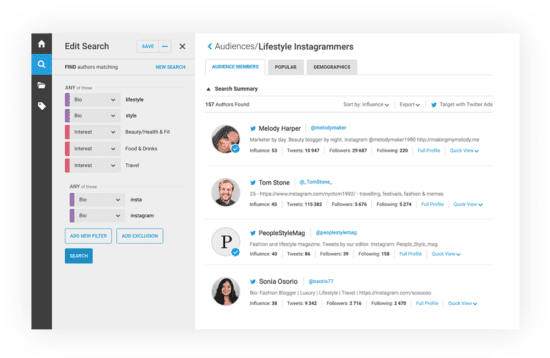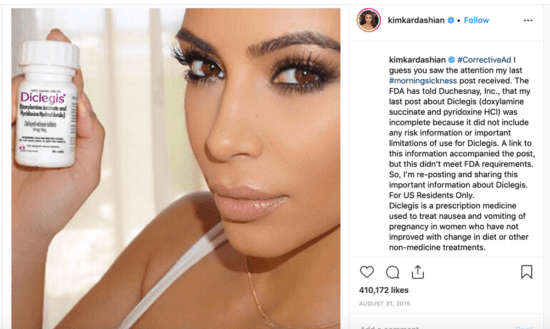Businesses have a tendency to make many of the same mistakes when collaborating with popular social influencers, errors that prevent them from getting the results they crave
Influencer marketing has been around for as long as marketing itself. Only in the modern age, the term influencer marketing is invariably used to describe the sort that occurs on social media, with Instagram tending to be the platform of choice. Chances are you’re already familiar with the concept of influencer marketing and, since you’ve found your way onto this blog, I’d wager that you’re not exactly thrilled with the results.
Don’t worry: you’re definitely not alone. Businesses have a tendency to make many of the same mistakes when collaborating with popular social influencers, errors that prevent them from getting the results they crave. Whether these missteps are a result of an ineffectual recruitment process or the actual campaigns is another question – but we’ll get into that. Read on then to learn about the common mistakes that hamstring your influencer marketing campaign, as well as best practices for running high-performance campaigns going forward.
Typical influencer marketing mistakes
Paying a high-profile influencer a generous sum is all well and good, but it doesn’t guarantee results. If your influencer campaign hasn’t paid dividends, it’s likely you’ve made one or several of the following mistakes.
Relying on follower numbers only
It’s often said that social media is a numbers game. And while that’s true to an extent, there’s so much more to it. For example, some influencers have hundreds of thousands of followers but surprisingly little influence and sparse engagement.
Follower numbers tend to be the first thing that draws the gaze, but much more important is the quality of those followers and how much they trust or even idolize the brand advocate in question. What’s more, you must ask yourself how relevant the influencer’s followers are to your business. Do they broadly fit your buyer persona? Are these supporters following the influencer for the right reasons? For example, you might recruit David Beckham to sell a suit. But how many of his followers are hardcore football fans who don’t really care about fashion? Your influencer needs to have the same audience as you do, and you need to get busy in Analytics to ensure you’re targeting the right people.
To gauge influence from the outset, research the engagement rate on your shortlisted candidate’s page (as well as on their blog, if they have one); consider how much they interact with followers on a day-to-day basis and compile insights about the kind of people who constitute their audience.
Thankfully, many influencer tools are starting to see the importance of looking at audiences rather than follower numbers; now, you can use tools like Brandwatch Audiences to find influencers by carefully examining their online audience:

It’s also worthwhile finding out which other brands they might have worked with in the past, to make sure you’re on the right track. If you’re a health store, you won’t want to use an influencer who was touting McCain Oven Chips last month!
Hiring the wrong influencer
Perhaps you have followed step one and are completely satisfied with the quality of your influencer’s followers. The advocate, for their part, is engaging and appears to inform his admirers’ buying decisions.
But you’ve made one fatal mistake: the influencer isn’t right. Perhaps they are too young or too old or based in the wrong location, or maybe their interests and values don’t align with your brand’s. It could be that the influencer simply doesn’t buy into what it is you’re offering, which then comes across in their delivery. Or perhaps the collaboration is so obviously a result of money changing hands that those usually devoted followers turn cold. Tone and style matter on social media and people hate to be duped. Choosing the best fit is, therefore, the wisest move if you wish to get positive results. Incidentally, there are many tools available to help you pinpoint influencers on social media: it pays to browse.
Not trusting the influencer
Influencer relations entail some degree of collaboration, but ordering your nominee around isn’t the way to go. After all, this person has built up a loyal legion of followers and, being something of a social media star, they will expect to have their own input on the campaign itself.
Some influencers are actually highly particular about brands they work with, as well as fiercely protective of their reputation. While these traits might strike you as negative, you should know that film stars and catwalk models aren’t exactly shy and retiring either.
The question is, can you turn these attributes to your advantage?
Your influencer knows their audience best, so pay close attention to what they have to say about the campaign and harness their expertise. Naturally, if all goes well you can agree on an ongoing relationship – or ask the influencer to recommend others with similar sway.
Not planning/strategizing your campaign
Whether your campaign is a standalone project or a lengthy one entailing multiple posts or even videos, you need to put a plan in place. This way, you can ensure that you’re effectively promoting the campaign across all channels and getting the most out of it.
Needless to say, planning your influencer-led campaign will call for determining realistic and measurable goals; deciding upon and crafting a clear call-to-action; and pre-determining all the relevant steps needed to run the campaign, both from your side and the influencers’.
By settling on a detailed plan of action, and agreeing upon the means of measuring success early on, everyone involved will know exactly what they are working towards. The goal of the campaign might be to increase your own follow count and build brand awareness; stimulate sales of a forthcoming or existing product; capture new emails, or just generate enquiries.
The point is, you’re not left scratching your head, wondering whether your campaign has been a roaring success or an abject failure; you need to know exactly what you want to achieve, and you need to come up with the perfect plan to help you achieve it.
Not checking and respecting the rules
Your campaign can go haywire very quickly if you fail to respect influencer marketing rules. Many companies have fallen foul of the rules governing influencer advertising, including social media doyenne Kim Kardashian, whose attempts to persuade her loyal fanbase of the merits of, er, doxylamine succinate and pyridoxine HCl, backfired when the FDA got involved:

In the UK, social campaigns fall under the remit of ASA, who issued guidance for influencers in late 2018. The rules are very clear and easy to follow, with the main caveat being that influencers must make it known when an ad is, well, just that: an ad.
It all comes back to consumer protection law, you see, and the brand is on the hook for any infringements, too. In short, make sure you’re not deliberately misleading the audience whose custom you want to capture. Transparency is in the interests of everyone concerned.
Conclusion
If properly executed, influencer marketing can give your brand or product the boost it needs. But unless you’re heeding the aforementioned, it’s unlikely you will get the kind of results you’re hoping for. Do your research and find a credible, authentic and active influencer who’s a good fit to front your campaign; then set about establishing goals and KPIs so your objectives are clear from the get-go. By following best practices, you’ll ensure your campaign resonates with customers in a meaningful way.
